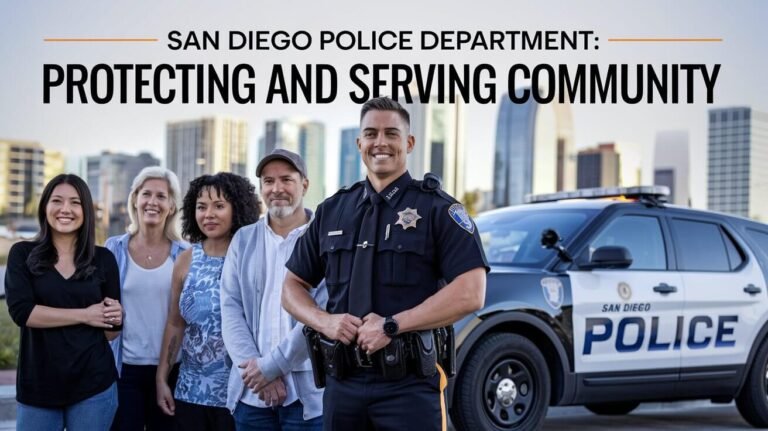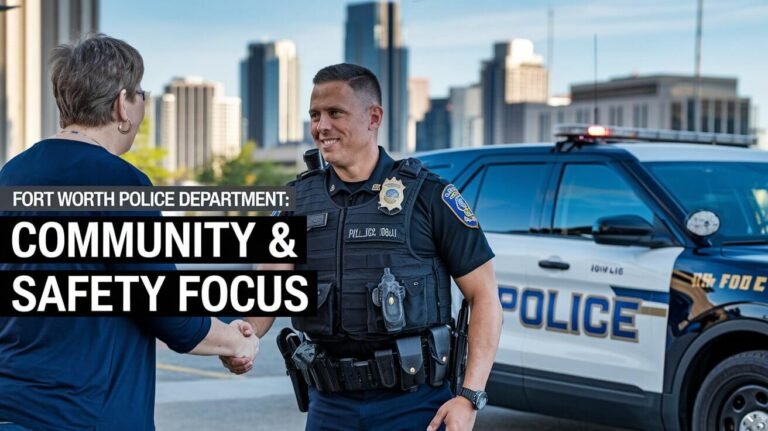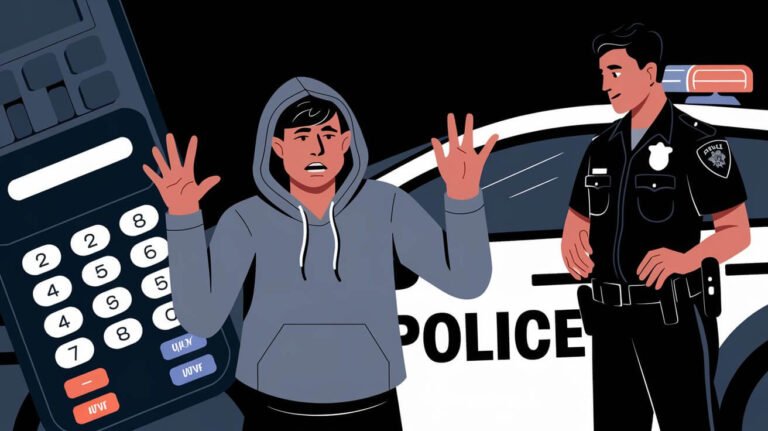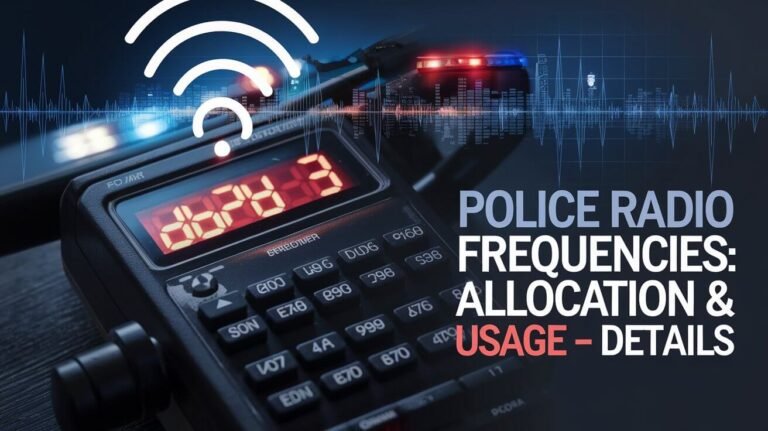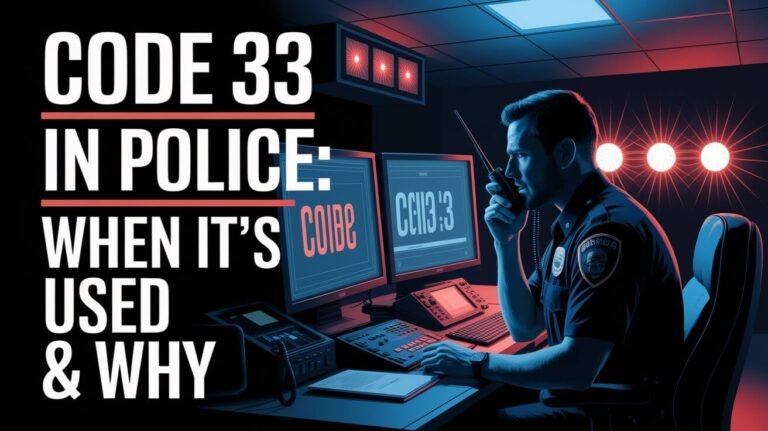10 24 Police Code: Urgent Officer Assistance Signal

Law enforcement agencies rely on a standardized system of communication to convey critical information efficiently. The ten-code system is a crucial part of this, enabling officers to quickly share updates and status changes over radio channels.
A specific code, signifying “Assignment Completed,” is an essential component of this system, facilitating streamlined communication among law enforcement personnel. This code is part of a broader framework that has been adopted to simplify radio communication and enhance operational effectiveness.
The use of standardized codes like this one has a significant impact on the efficiency of law enforcement operations, allowing officers to focus on their tasks without unnecessary delays. Understanding the meaning, history, and applications of such codes is vital for appreciating the complexities of modern law enforcement practices.
Key Takeaways
- The ten-code system is used to simplify law enforcement communication.
- A specific code is used to signify “Assignment Completed.”
- Standardized codes enhance operational effectiveness.
- Law enforcement agencies rely on efficient radio communication.
- The use of codes streamlines communication among personnel.
Meaning of 10-24 Police Code
In police radio communication, the 10-24 code holds significant importance. It is a standardized code used to convey a specific status or completion of a task.
Official Definition and Significance
The 10-24 police code is officially defined as “Assignment Completed.” This means that when an officer reports “10-24,” they are indicating that they have finished their assigned task. The significance of this code lies in its ability to streamline communication between officers and dispatch centers. By using a standardized code, law enforcement agencies can ensure clarity and efficiency in their operations.
Some key aspects of the 10-24 code include:
- Clear indication of task completion
- Enhanced communication between units and dispatch
- Improved operational efficiency
Practical Applications in the Field
In practical terms, the 10-24 code is used to update dispatch and other units on the status of ongoing operations. For example, after completing a patrol or responding to a call, an officer would use the 10-24 code to signal that their task is complete. This helps in managing resources and coordinating responses more effectively. Some common scenarios where the 10-24 code is used include:
- After completing a traffic stop
- Upon finishing a response to a service call
- At the end of a patrol shift
Origins and Development of Ten-Codes
The development of ten-codes marked a significant milestone in the history of police codes. The introduction of radio communication in law enforcement created a need for standardized codes to ensure clear and efficient communication.
Associated Public-Safety Communications Officers (APCO) played a crucial role in developing the ten-code system. By standardizing police radio communication, APCO aimed to reduce misunderstandings and improve response times across different jurisdictions.
Birth of Police Radio Communication
The advent of radio communication in the early 20th century revolutionized police operations. As police departments began adopting radio technology, the need for a standardized system of communication became apparent. APCO took the lead in developing the ten-code system to address this need.
Early days of police radio communication were marked by confusion and miscommunication. The introduction of ten-codes helped to clarify messages and streamline police operations.
How the 10-24 Code Evolved
Over time, the 10-24 code became an integral part of the ten-code system, signifying the completion of an assignment. As law enforcement agencies across the United States adopted the ten-code system, the 10-24 code evolved to become a universally recognized signal.
The widespread adoption of the 10-24 code reflects the ongoing efforts to standardize police communication. The ten-code system development has been instrumental in shaping modern law enforcement practices.
10-24 Police Code Across America
Regional variations in the interpretation and application of the 10-24 police code are notable across America. While the code is widely recognized, its usage can differ significantly from one region to another, reflecting local practices, preferences, and historical contexts.
State and Regional Variations
The 10-24 police code’s interpretation can vary by state and region. These variations are influenced by local law enforcement practices and historical communication protocols.
East Coast Interpretations
On the East Coast, the 10-24 code is often used in densely populated urban areas with high frequencies of police activity. Here, the code is an integral part of a fast-paced communication system.
West Coast Practices
In contrast, West Coast law enforcement agencies might use the 10-24 code with slightly different nuances, sometimes incorporating it into broader communication strategies that include other ten-codes.
Federal vs. Local Agency Usage
The usage of the 10-24 police code also differs between federal and local law enforcement agencies. Federal agencies tend to use standardized codes across jurisdictions to facilitate interagency communication.
Local agencies, however, may adapt the code to fit their specific needs, sometimes resulting in variations that can affect interoperability between different departments.
The Ten-Code System Framework
At the heart of police radio communication lies the ten-code system, a structured set of codes designed to convey complex information succinctly.
The ten-code system is a comprehensive framework that includes a variety of codes used for different purposes in law enforcement, enhancing the efficiency and clarity of radio communications.
Most Frequently Used Police Codes
Some of the most frequently used police codes include 10-4 (acknowledgment), 10-20 (location), and 10-24 (completed task or assignment).
These codes are essential for quick and effective communication among law enforcement officers.
- 10-4: Acknowledgment that a message has been received.
- 10-20: Requesting or providing location information.
- 10-24: Indicating that a task or assignment has been completed.
Relationship Between 10-24 and Other Codes
Similar and Complementary Codes
Codes like 10-23 (arrived on scene) and 10-25 (report in person to a location) are often used in conjunction with 10-24 to provide a detailed status update of an operation.
| Code | Description | Usage Context |
|---|---|---|
| 10-23 | Arrived on scene | Upon arrival at a designated location |
| 10-24 | Completed task/assignment | After finishing a task or assignment |
| 10-25 | Report in person to a location | When required to report physically to a location |
Potential Code Conflicts
While the ten-code system is widely used, there is potential for code conflicts due to variations in code interpretation across different jurisdictions.
Standardization efforts are crucial to minimize misunderstandings and ensure seamless communication.
10-24 Police Code in Action
In the field, the 10-24 code plays a significant role in both routine and critical situations, serving as a vital tool for police officers to communicate effectively during police operations.
The versatility of the 10-24 code is evident in its application across various scenarios. For instance, during routine patrols, officers use the 10-24 code to report the completion of their tasks, helping to keep dispatch informed about their status.
Routine Patrol Scenarios
In routine patrol scenarios, the 10-24 code is used to signify that an officer has completed a task or is ready for the next assignment. For example, after checking on a reported incident and finding no issues, an officer might use the 10-24 code to update dispatch. This helps in maintaining a smooth flow of operations and ensures that other units are aware of the current status of ongoing activities.
Effective use of the 10-24 code in routine patrols enhances the efficiency of police operations by allowing for better resource allocation and reducing unnecessary communications.
Critical Incident Response
During critical incidents, such as responding to emergencies, the 10-24 code is crucial for updating other units on the status of the response. For instance, after arriving at the scene of an emergency, an officer might use the 10-24 code to indicate that they are on the scene and ready to provide an update. This facilitates a coordinated emergency response, ensuring that all necessary resources are deployed effectively.
The use of the 10-24 code in critical incident response scenarios enables a swift and organized response, which is critical in managing and resolving emergencies efficiently. By keeping all units informed, the 10-24 code plays a key role in emergency response efforts.
Rural vs. Urban 10-24 Code Implementation
The 10-24 police code is a versatile tool used differently in rural and urban policing contexts. Its implementation varies based on the unique challenges and operational needs of law enforcement agencies in different environments.
Small Department Adaptations
In rural areas, law enforcement agencies often face challenges such as limited resources and vast geographical territories. The 10-24 code is used to maximize efficiency and coordinate responses effectively. For instance:
- Officers use the 10-24 code to quickly confirm receipt of messages in areas with poor radio reception.
- It helps in managing resources by signaling availability for calls.
These adaptations enable small departments to maintain effective communication despite the challenges they face.
Metropolitan Police Practices
In contrast, metropolitan police departments operate in complex environments with diverse incidents and higher call volumes. The 10-24 code is integrated into a broader communication system that includes various ten-codes and protocols. Key aspects include:
- Using the 10-24 code to manage unit availability during high-traffic periods.
- Coordinating with other emergency services through standardized codes.
This structured approach allows metropolitan police to handle a wide range of situations efficiently.
Modern Technology and the 10-24 Code
Modern policing is witnessing a significant shift with the integration of digital technology and traditional radio codes. Law enforcement agencies are increasingly adopting digital communication systems, which are changing how they use and interact with traditional codes like 10-24.
Digital Communication Systems
The shift towards digital communication systems in policing is driven by the need for more efficient, secure, and reliable communication. Digital systems offer end-to-end encryption, reducing the risk of unauthorized access to sensitive information. These systems also enable faster data exchange, including images and videos, which can be crucial in modern policing.
Moreover, digital platforms allow for better coordination between different units and agencies, enhancing the overall effectiveness of law enforcement operations. For instance, during a critical incident, digital systems can rapidly disseminate information, ensuring that all relevant parties are informed and can respond accordingly.
Future Relevance of Traditional Codes
While digital communication systems offer numerous advantages, traditional codes like 10-24 are likely to remain relevant. These codes have been ingrained in policing culture for decades and provide a concise way to communicate complex information quickly.
The future may see a hybrid approach, where traditional codes are used in conjunction with digital communication platforms. This blend of old and new could enhance the efficiency and clarity of police communications, ensuring that the benefits of both systems are leveraged.
10-24 Police Code Compared to Other Emergency Services
Communication is key in emergency response, and different services, including police, fire, and EMS, have developed their own specific codes. While the 10-24 Police Code is integral to law enforcement operations, understanding how other emergency services communicate can provide valuable insights into the broader context of emergency response.
Fire Department Communication Systems
Fire departments use communication systems tailored to their operational needs, which often involve different codes and terminology than those used by law enforcement. For instance, fire departments may use specific codes to report the severity of a fire or to request additional resources. These systems are designed to be clear and efficient, allowing firefighters to respond quickly and effectively to emergencies.
Key differences between fire department communication systems and the 10-24 Police Code include the use of terminology specific to firefighting operations, such as codes for different types of fires or for reporting hazardous conditions.
EMS and Medical Response Codes
Emergency Medical Services (EMS) providers also have their own set of communication codes, primarily focused on medical emergencies and patient care. EMS codes may include information about the patient’s condition, the level of care required, and the need for specific medical equipment or personnel. These codes are designed to facilitate rapid and appropriate medical response.
The use of standardized medical codes enables EMS teams to communicate effectively with hospitals and other healthcare providers, ensuring that patients receive the necessary care in a timely manner.
Police Codes in Popular Culture
The use of police codes in popular media has both reflected and influenced public perception. Police codes, such as the 10-24 code, have become an integral part of the cultural landscape through their depiction in TV shows and films.
10-24 and Other Codes in TV and Film
The portrayal of police codes in media often walks a fine line between accuracy and dramatization. Shows like “Law & Order” and “CSI” have used police codes to add authenticity to their storylines.
However, the accuracy of these depictions can vary, with some codes being used correctly while others are misused or exaggerated for dramatic effect.
Public Familiarity with Police Terminology
The public’s exposure to police codes through media can both educate and mislead. While it can spark interest in law enforcement procedures, it can also create misconceptions about police practices.
| Code | Meaning | Media Representation |
|---|---|---|
| 10-24 | Assignment Completed | Often used to signify the end of a task or mission |
| 10-4 | Acknowledgment | Frequently used in media to show confirmation or understanding |
| 10-33 | Emergency Traffic | Used in critical scenes to signal urgency or danger |
Myths and Facts About the 10-24 Code
Misconceptions about police codes like 10-24 are common, often due to a lack of understanding of their practical applications. The 10-24 code, meaning “Assignment Completed,” is a fundamental part of law enforcement communication. However, its widespread use has led to various myths and misunderstandings about its meaning and application.
Common Misinterpretations
One common misconception is that police codes are used uniformly across all law enforcement agencies. While the 10-24 code is widely recognized, its application can vary between departments. Some believe that police codes are overly complex, but in reality, they are designed to be concise and efficient.
Another misinterpretation is that the 10-24 code is used in isolation. In fact, it is part of a larger system of ten-codes used for various situations, from routine patrols to critical incidents.
The Reality of Code Usage
In reality, the 10-24 code is a versatile tool used in a variety of contexts. For example, it can be used to signify the completion of a task, such as a traffic stop or a response to a call. The code helps in streamlining communication, making it quicker and more effective.
Actual Usage Scenarios:
- Completing a report after a minor incident
- Signifying the end of a pursuit or chase
- Confirming the completion of a dispatched call
The table below highlights the differences between perceived and actual usage of the 10-24 code:
| Aspect | Perceived Usage | Actual Usage |
|---|---|---|
| Uniformity | Believed to be used uniformly across all agencies | Usage can vary between departments |
| Complexity | Thought to be complex and confusing | Designed to be concise and efficient |
| Application | Believed to be used in isolation | Part of a larger system of ten-codes |
Legal Framework of Police Radio Communication
Police radio communication is governed by a complex legal framework that addresses various aspects, including privacy and evidentiary value. This framework is crucial in ensuring that law enforcement agencies can effectively communicate while maintaining the integrity of their operations.
Privacy Considerations
The use of police radio communication, including codes like 10-24, raises important privacy considerations. Privacy laws regulate how police communications can be monitored or recorded, and there are rules governing the use of coded language to ensure clarity and security. Law enforcement agencies must balance the need for effective communication with the need to protect sensitive information.
For instance, police communications often contain sensitive information that is not intended for public consumption. As such, there are regulations in place to prevent unauthorized access to these communications.
Evidentiary Value in Legal Proceedings
Recordings of police communications, including those using the 10-24 code, can be used as evidence in court. The accurate interpretation of these codes is crucial in legal contexts, as they can have a significant impact on the outcome of cases. Law enforcement agencies must ensure that their communication records are accurate, reliable, and properly documented.
The evidentiary value of police communications is not limited to the content of the messages themselves, but also extends to the context in which they were made. As such, law enforcement agencies must maintain detailed records of their communications, including the time, date, and context of each transmission.
Conclusion
The 10-24 Police Code is a vital component of law enforcement communication, signifying the completion of an assignment. This code has been explored in depth, from its origins in the ten-code system to its contemporary applications.
In summary, understanding the 10-24 code and its role in facilitating efficient communication among officers and dispatchers is crucial. As technology continues to evolve, the relevance of traditional codes like 10-24 remains significant for law enforcement professionals.
The 10-24 Police Code plays a fundamental role in modern policing, and its continued use underscores its importance in effective law enforcement communication.
Answering Your Queries
What does the 10-24 Police Code mean?
The 10-24 Police Code is officially defined as “Assignment Completed,” indicating that an officer has finished their assigned task.
How is the 10-24 Police Code used in law enforcement?
The 10-24 Police Code is used to update dispatch and other units on the status of ongoing operations, helping to manage resources and coordinate responses more effectively.
What is the history of the 10-24 Police Code?
The 10-24 Police Code is part of the ten-code system developed by the Associated Public-Safety Communications Officers (APCO) to standardize police radio communication.
Are there regional variations in the use of the 10-24 Police Code?
Yes, there can be variations in the interpretation and application of the 10-24 Police Code from one region to another, reflecting local practices and preferences.
How does the 10-24 Police Code relate to other police codes?
The 10-24 Police Code is part of a larger set of codes used for different purposes in law enforcement, including codes for emergencies and status updates.
How is the 10-24 Police Code used in different scenarios?
The 10-24 Police Code is used in a variety of scenarios, ranging from routine patrols to critical incident responses, to update other units on the status of the response.
How do rural and urban law enforcement agencies differ in their use of the 10-24 Police Code?
Rural agencies might use the 10-24 Police Code to maximize efficiency and coordinate responses effectively, while metropolitan police departments might use it as part of a more intricate communication system.
How is modern technology affecting the use of the 10-24 Police Code?
Modern digital communication systems are transforming the way law enforcement agencies communicate, potentially integrating traditional codes like 10-24 into more sophisticated communication platforms.
How do other emergency services use communication codes?
Fire departments and EMS providers use codes tailored to their specific operational needs, reflecting the different nature of their work.
How have police codes been portrayed in popular culture?
Police codes, including the 10-24 code, have been frequently depicted in TV shows and films, sometimes accurately and sometimes exaggerated for dramatic effect.
What are some common misconceptions about the 10-24 Police Code?
Some people might believe that police codes are used uniformly across all law enforcement agencies, or that they are more complex than they actually are.
What is the legal framework surrounding police radio communication?
Police radio communication, including the use of codes like 10-24, is subject to privacy laws and regulations governing the use of coded language to ensure clarity and security.

